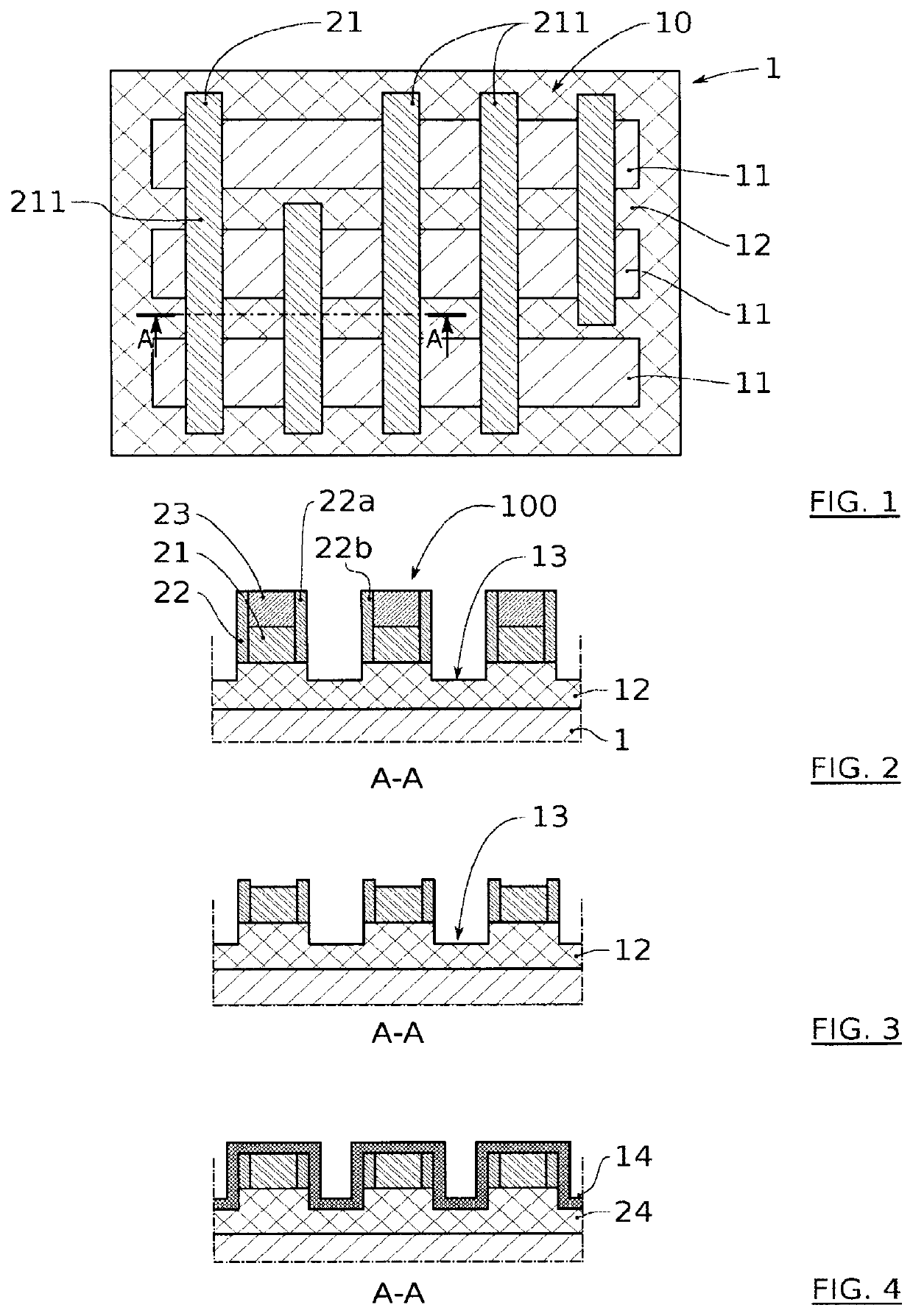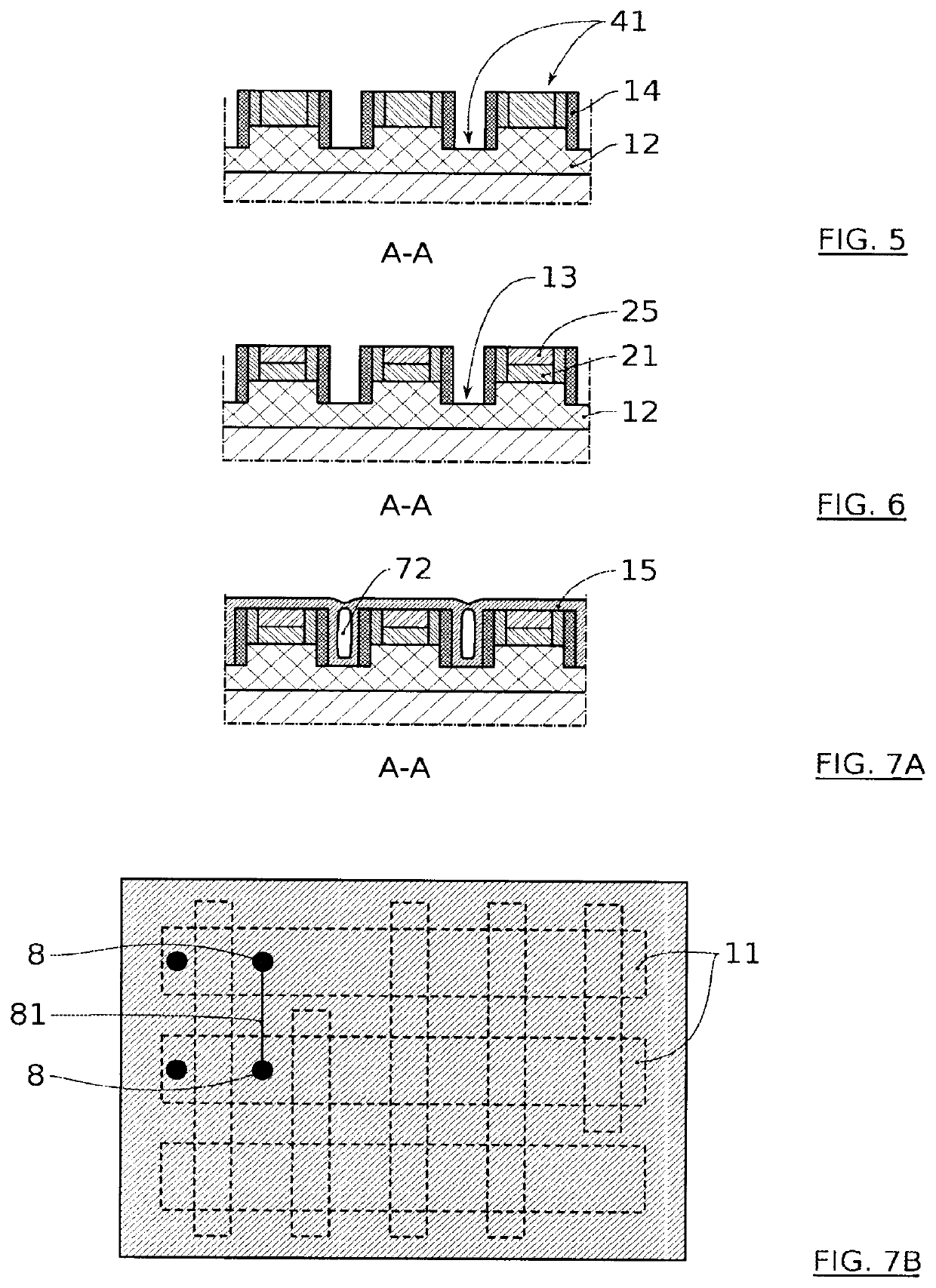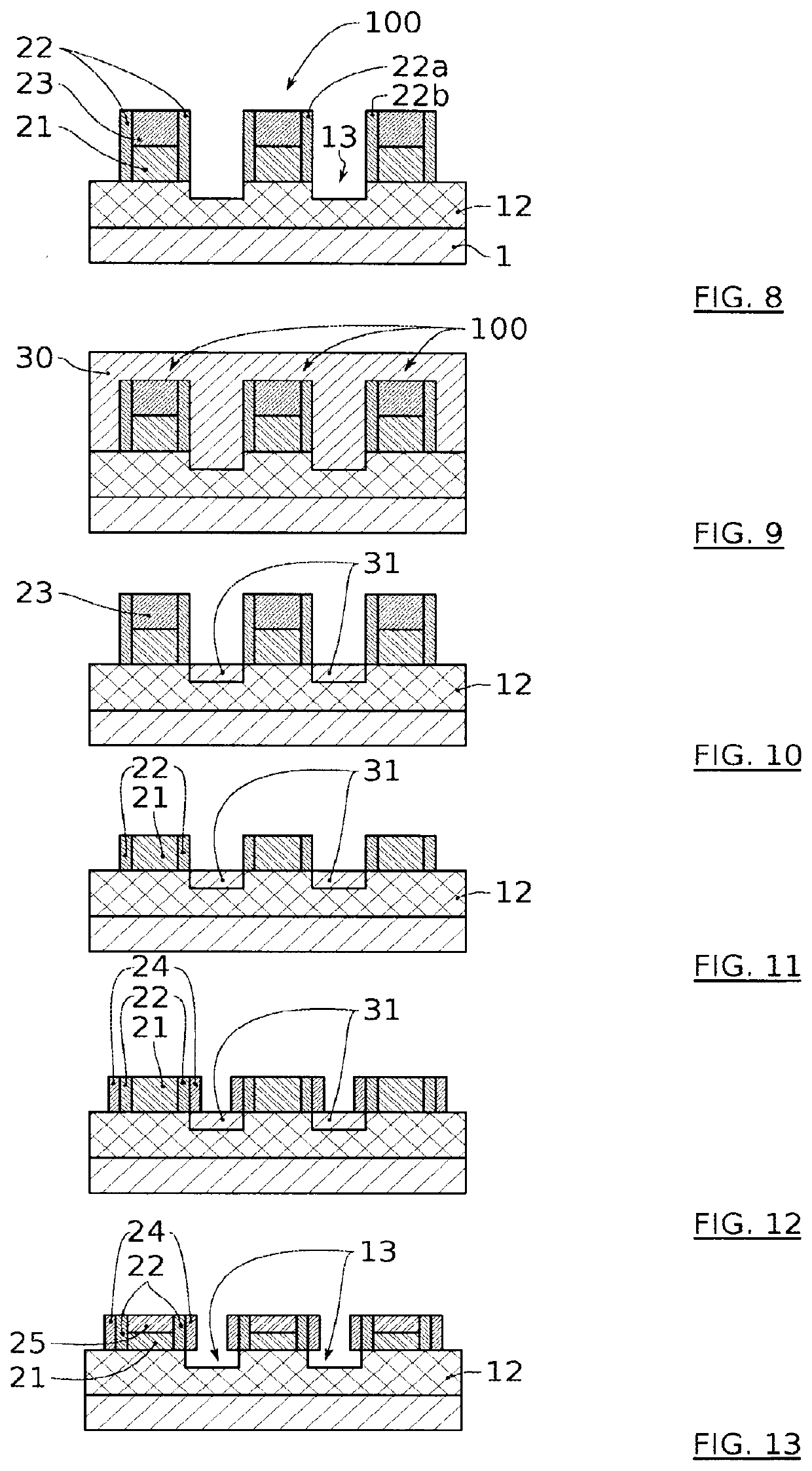Process for manufacturing micro-electronic components
a technology of micro-electronic components and manufacturing processes, which is applied in the direction of basic electric elements, electrical equipment, and semiconductor devices, can solve the problems of short circuit of neighbouring micro-electronic components, damage to the integrity of dielectric materials, and residual voids that cannot be filled by other layers, so as to avoid residual voids and improve the effect of stress liner of spaces between gates
- Summary
- Abstract
- Description
- Claims
- Application Information
AI Technical Summary
Benefits of technology
Problems solved by technology
Method used
Image
Examples
first embodiment
[0112] illustrated in FIGS. 8 to 13, the method comprises, after forming the first spacers 22 and after a first doping by implantation, a step of filling the cavities by depositing a carbon material.
[0113]As illustrated in FIG. 9, a deposition of a carbon layer 30 can be carried out for example by centrifugation, so as to fill the spaces between the gate patterns 100. This carbon layer 30 can optionally cover the top of the gate patterns 100. This layer 30 can thus be used to encapsulate all the underlying elements.
[0114]This carbon layer 30, for example amorphous carbon, can be, without limitation, formed from a carbon resin whose viscosity properties are adapted to a spreading by centrifugation. Annealing after spreading can allow to evaporate the solvents and / or to crosslink the resin so as to obtain the solid carbon layer 30.
[0115]Various carbon resins can be used, such as: polymethyl methacrylate (PMMA) or polydimethylsiloxane (PDMS).
[0116]The thickness of the carbon layer 30 o...
second embodiment
[0140] illustrated in FIGS. 14 to 17, the method comprises, after forming the spacers and doping by implantation (FIG. 14), a step of filling the cavities by depositing a silicon oxide. More generally, it can be an identical material to the underlying one (the one wherein the STI is formed). This is a material capable of being consumed during at least one of the treatment steps indicated, in particular the etchings, this consumption being advantageously equivalent to that of the STI material.
[0141]As illustrated in FIG. 15, a deposition of a silicon oxide layer 40 is carried out so as to fill the spaces between gate patterns 1. Optionally, the layer 40 may cover the gate patterns so that it forms an encapsulation of all the underlying elements.
[0142]This deposition can be done by one of the following techniques: chemical vapour deposition FCVD (acronym for Furnace Chemical Vapour Deposition), oxide deposition under HARP (acronym for High Aspect Ratio Process) type conditions, Flowab...
PUM
| Property | Measurement | Unit |
|---|---|---|
| thickness | aaaaa | aaaaa |
| dielectric constant | aaaaa | aaaaa |
| angle | aaaaa | aaaaa |
Abstract
Description
Claims
Application Information
 Login to View More
Login to View More - R&D
- Intellectual Property
- Life Sciences
- Materials
- Tech Scout
- Unparalleled Data Quality
- Higher Quality Content
- 60% Fewer Hallucinations
Browse by: Latest US Patents, China's latest patents, Technical Efficacy Thesaurus, Application Domain, Technology Topic, Popular Technical Reports.
© 2025 PatSnap. All rights reserved.Legal|Privacy policy|Modern Slavery Act Transparency Statement|Sitemap|About US| Contact US: help@patsnap.com



